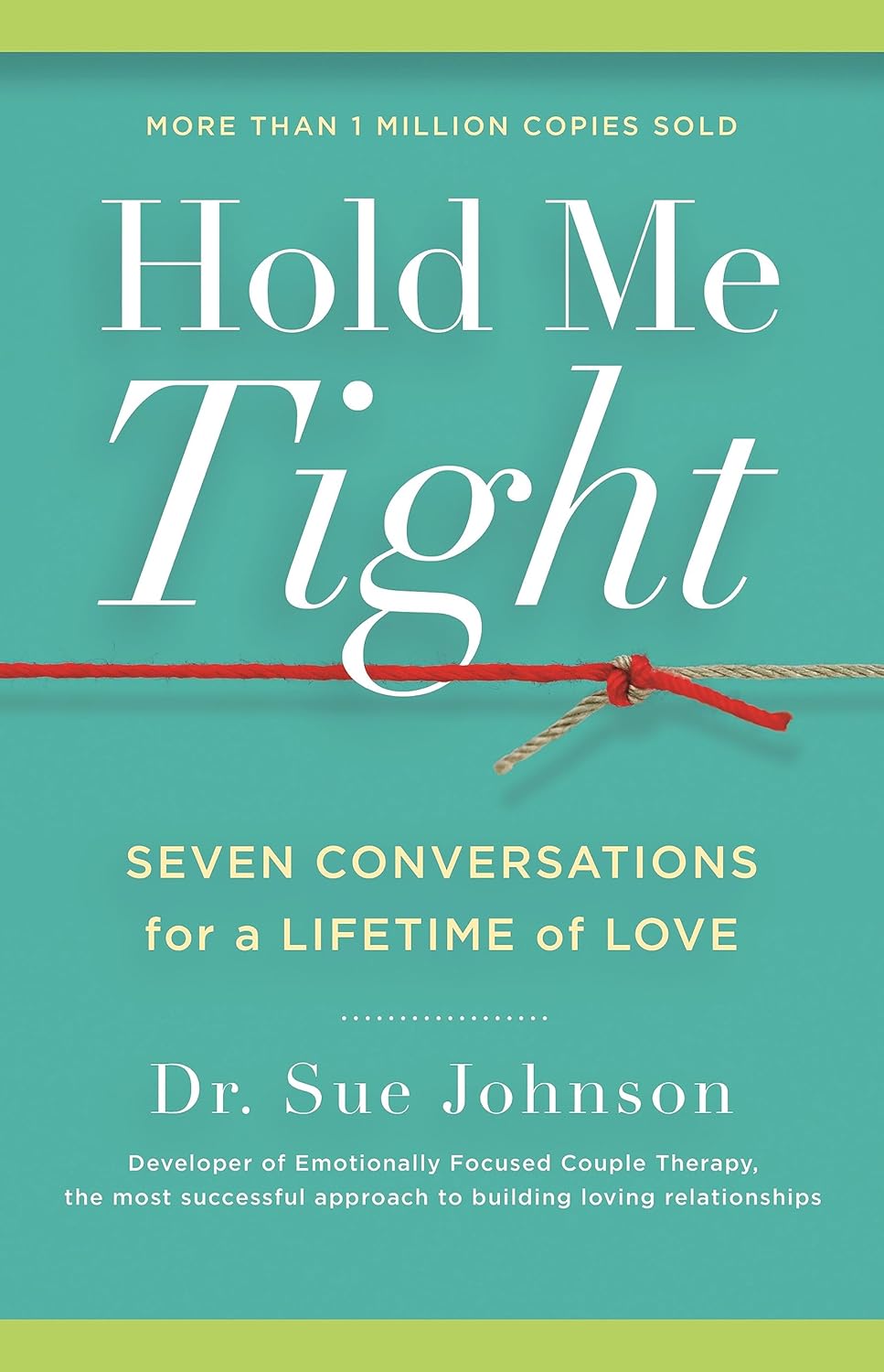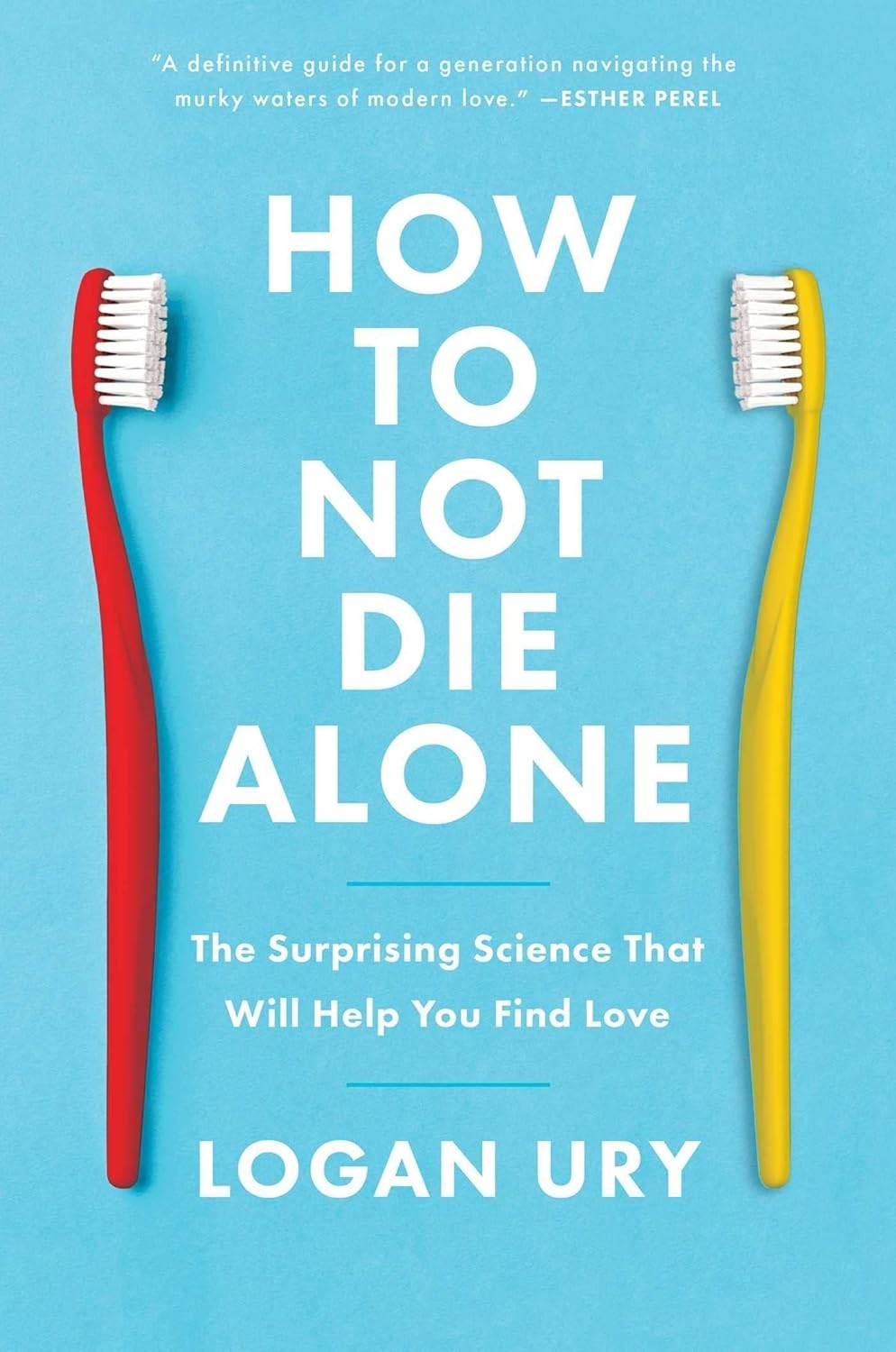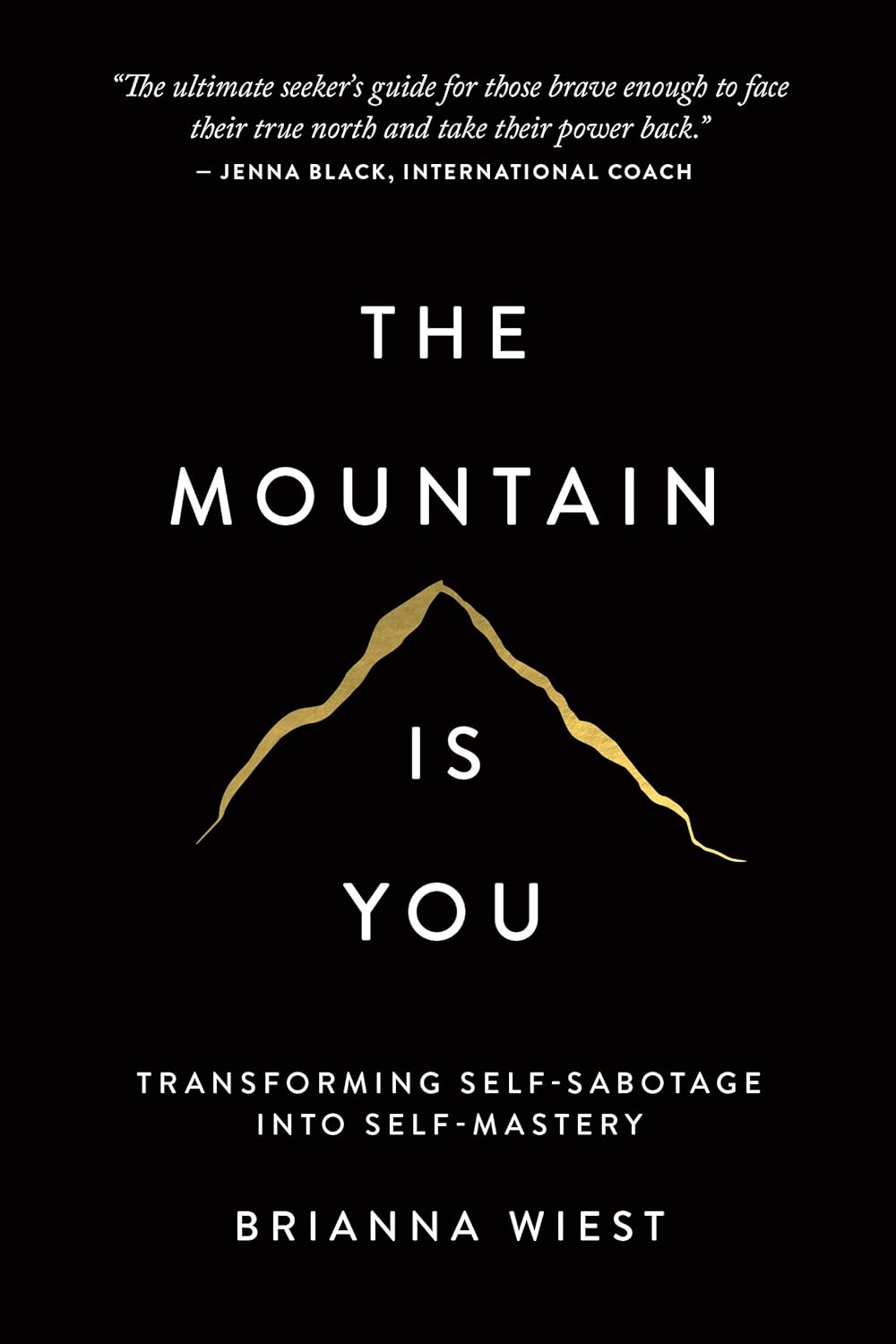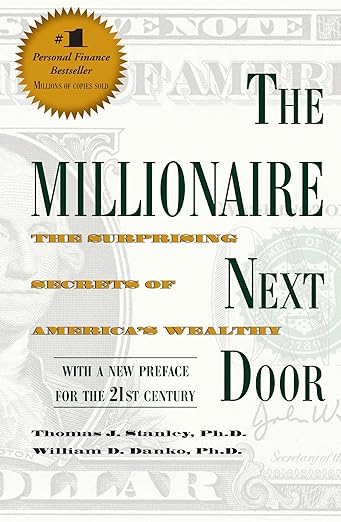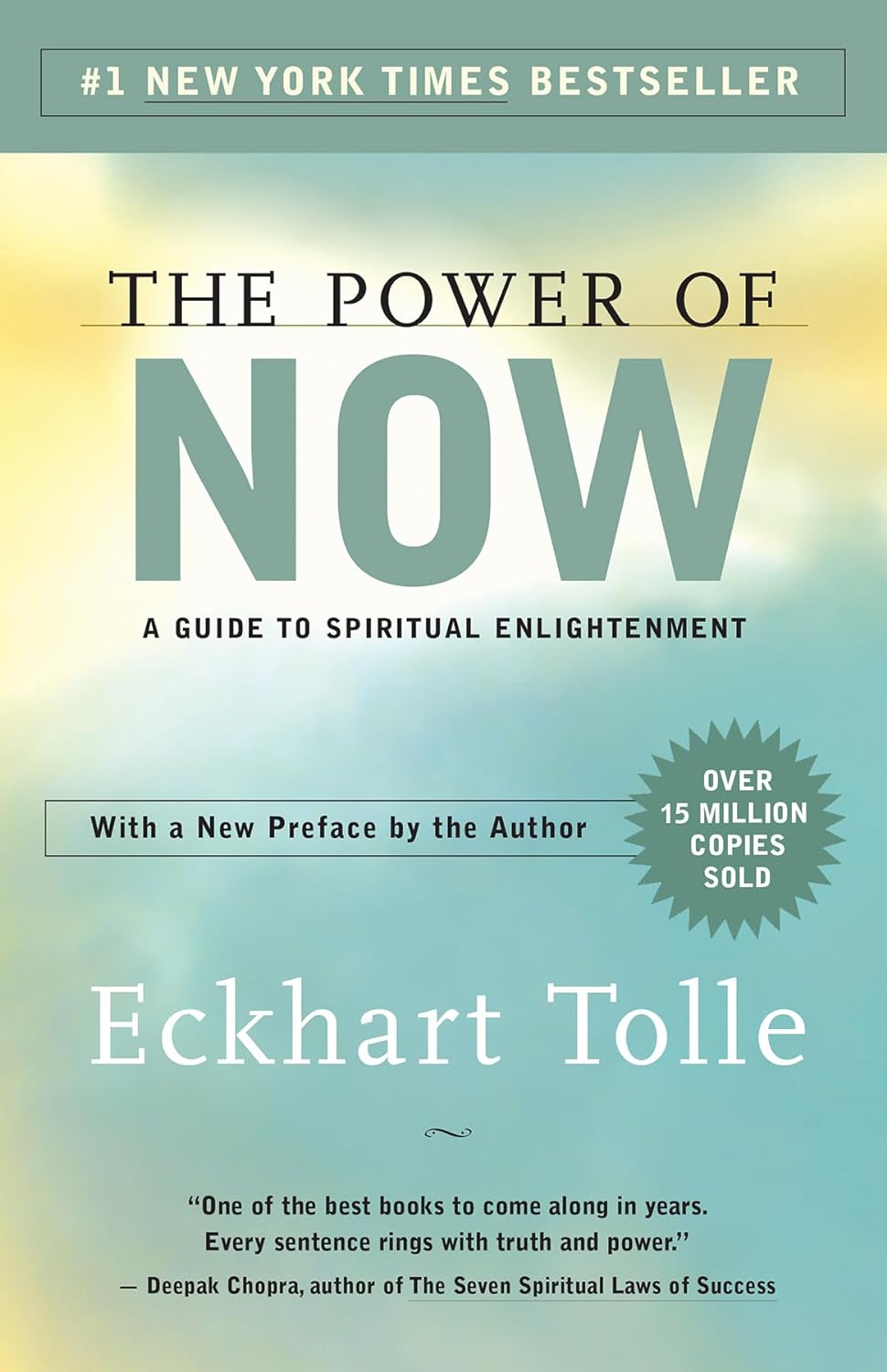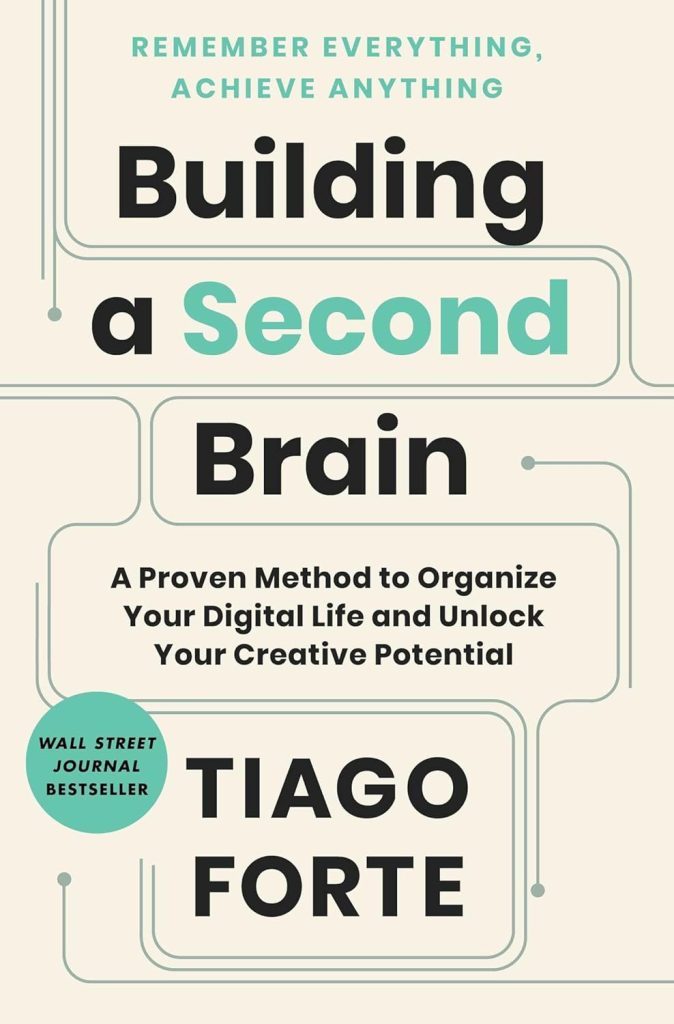
Buy The Book
Chapter
- PART ONE The Foundation – Understanding What’s Possible
- ✦ Chapter 1: Where It All Started
- ✦ Chapter 2: What Is a Second Brain?
- ✦ Chapter 3: How a Second Brain Works
- PART TWO The Method – The Four Steps of CODE
- ✦ Chapter 4: Capture – Keep What Resonates
- ✦ Chapter 5: Organize – Save for Actionability
- ✦ Chapter 6: Distill – Find the Essence
- ✦ Chapter 7: Express – Show Your Work
- PART THREE The Shift – Making Things Happen
- ✦ Chapter 8: The Art of Creative Execution
- ✦ Chapter 9: The Essential Habits of Digital Organizers
- ✦ Chapter 10: The Path of Self-Expression
- ✦ Bonus Chapter: How to Create a Tagging System That Works
Building a Second Brain: A Proven Method to Organize Your Digital Life and Unlock Your Creative Potential

About
Tiago Forte, a leading expert in personal knowledge management, presents “Building a Second Brain,” a practical guide to organizing your digital life and unlocking creative potential. Forte introduces a system for capturing, organizing, and leveraging information to enhance productivity and innovation.
The book details the CODE method: Capture, Organize, Distill, and Express. Readers learn to curate information, connect ideas, and transform knowledge into tangible outputs. By creating a “Second Brain,” a trusted external repository for ideas, individuals can free their minds, foster creativity, and achieve goals more efficiently. Forte’s approach emphasizes actionability and turning information into a dynamic tool for personal and professional growth.

Spark
Learn
Review
PART ONE The Foundation – Understanding What’s Possible
✦ Chapter 1: Where It All Started
The overwhelming pace of modern life often leaves people feeling scattered, trying to hold onto ideas, projects, and obligations in their minds. The struggle to stay organized and productive became increasingly evident as the sheer volume of information grew. This challenge revealed the limits of relying solely on memory and mental effort. The need for an external system to capture, organize, and retrieve important insights and information became clear.
The realization came from experiencing the chaos of juggling too much at once. Information overload and a lack of clarity about how to manage it led to a deeper understanding: the human brain is not designed to store everything. Instead, it thrives when freed from the burden of remembering and tracking every detail. By offloading mental clutter, space is created for creativity, focus, and deeper thinking.
This shift in perspective sparked the idea of building a “second brain,” an external system that could store and organize thoughts, ideas, and knowledge. The goal was not to rely less on the mind but to partner with it, creating a system that complemented natural strengths while compensating for weaknesses.
By embracing this approach, the constant pressure of keeping up with everything eased. The focus shifted from holding onto information to curating and using it effectively. Rather than feeling overwhelmed, the process became one of discovery and empowerment, paving the way for a more intentional and organized way of working and living.
✦ Chapter 2: What Is a Second Brain?
A second brain is an external system for capturing and organizing information, ideas, and insights. It acts as an extension of the mind, designed to offload mental clutter and provide clarity in navigating the complexities of modern life. This system doesn’t replace thinking but supports it, allowing for deeper focus and creativity.
The second brain functions like a trusted partner, holding onto what matters most so that the mind can stay free to engage in higher-level tasks. It stores everything from notes and ideas to resources and inspirations, creating a centralized repository that can be accessed whenever needed. This approach eliminates the fear of forgetting and reduces the mental strain of trying to keep track of everything.
By treating knowledge as a resource to be cultivated and refined, a second brain becomes a tool for making better decisions and creating meaningful work. It enables a shift from reactive to proactive thinking, as the system organizes information in a way that aligns with goals and priorities.
This isn’t about technology for its own sake—it’s about using tools to amplify what the mind is already capable of. Whether through apps, digital platforms, or even physical methods, the second brain becomes a personal archive of ideas and insights, ready to support problem-solving and creativity when needed.
The second brain is not just a productivity tool but a way to live with greater intention, making the most of time, energy, and attention by focusing on what truly matters.
✦ Chapter 3: How a Second Brain Works
A second brain operates by capturing, organizing, and retrieving information in a structured yet flexible way. The process begins with capturing—the act of collecting ideas, notes, and insights as they arise. This ensures nothing important is lost, freeing the mind from the constant effort of remembering.
Once captured, the information needs to be organized into categories or projects that reflect priorities and goals. This step transforms scattered inputs into a clear structure, making it easier to find and use later. Organization isn’t about creating a rigid system but about tailoring the second brain to suit personal needs and workflows.
Retrieving information is where the true value of a second brain shines. With everything stored in one place, it becomes simple to revisit ideas, draw connections, and apply insights to current challenges or opportunities. The system becomes a trusted resource, always available to support creativity, decision-making, and problem-solving.
The second brain works best when it’s engaged consistently. Regularly updating, refining, and curating the content keeps it relevant and aligned with evolving priorities. This isn’t about perfection but about creating a living system that grows and adapts over time.
By partnering with the second brain, it becomes possible to move through life with greater clarity and focus. The mental load is lightened, and the mind is free to do what it does best—think creatively, solve problems, and engage deeply with the present moment. The second brain becomes a trusted ally in living and working more effectively.
PART TWO The Method – The Four Steps of CODE
✦ Chapter 4: Capture – Keep What Resonates
Capturing ideas, insights, and information is the foundation of building a second brain. The goal isn’t to gather everything but to focus on what resonates. Often, the most meaningful thoughts or pieces of information spark curiosity, strike a personal chord, or align with current goals. These are the things worth saving, as they hold the potential to inspire future action or reflection.
The act of capturing is about awareness. Throughout daily life, opportunities arise to collect valuable inputs—whether from conversations, books, articles, or personal observations. Having a reliable method to record these moments ensures that nothing meaningful slips away. Tools like notebooks, apps, or voice memos can serve this purpose, allowing for quick and effortless capture.
Rather than hoarding information, the key is to filter for quality. Not every piece of input deserves to be saved. By focusing only on what sparks genuine interest or utility, the second brain remains lean and actionable. This practice prevents overwhelm and keeps the system aligned with personal priorities.
The process of capturing creates a safety net for creativity and thinking. With ideas saved in a trusted external system, the mind is free to focus on the present rather than holding onto everything. Capturing is not just about collecting but about honoring what truly matters, creating a foundation for deeper engagement and meaningful work in the future.
✦ Chapter 5: Organize – Save for Actionability
Organizing information is the next step in building a second brain. Once ideas and insights are captured, they need to be arranged in a way that makes them easy to access and use. The goal is to design a system that reflects priorities and enables quick retrieval when needed.
Actionability is the guiding principle for organizing. Information that can directly contribute to a project, decision, or goal should take priority. By categorizing items based on their relevance to ongoing work or future plans, the system becomes a resource that supports action rather than a static archive.
A simple and intuitive structure works best—one that doesn’t require constant maintenance or complexity. Grouping information into broad categories or projects makes it easier to find and apply later. Overloading the system with unnecessary details can create clutter, so it’s important to keep things clear and functional.
Organizing is not about perfection but about accessibility. The second brain should function like a personal assistant, always ready to provide the right information at the right time. By aligning the structure with ongoing goals and needs, it becomes a tool for progress rather than a repository of forgotten notes.
Through organization, captured ideas transform from scattered fragments into a coherent system. This step ensures that insights are not only preserved but also positioned to make a real impact, supporting creativity and productivity in meaningful ways.
✦ Chapter 6: Distill – Find the Essence
Distilling information is the process of uncovering its most essential and valuable parts. Raw inputs often contain too much noise, making it difficult to see what truly matters. By distilling, the focus shifts to extracting key insights, ideas, or takeaways that can be applied directly.
This step requires intentionality. Instead of saving everything that was captured, it’s about refining the material to highlight the most important points. Summaries, bullet points, or concise notes can make complex ideas easier to understand and use. The goal is to reduce information to its core essence, while still preserving its usefulness.
Distillation helps prevent the system from becoming overwhelming. By focusing on clarity, the second brain remains a resource that inspires action, rather than a cluttered collection of scattered thoughts. This practice also sharpens understanding, as the act of distilling requires engaging deeply with the material.
The essence of an idea is often what resonates most or has the greatest potential for impact. By focusing on these aspects, it becomes possible to draw connections between different pieces of information and apply them to new contexts.
Distilling is not about oversimplification but about focusing on what truly matters. This process transforms captured ideas into actionable insights, keeping the system lean, clear, and aligned with personal priorities.
✦ Chapter 7: Express – Show Your Work
Expression is the ultimate purpose of the second brain. Capturing, organizing, and distilling ideas are valuable, but their true worth lies in sharing and applying them. Expressing insights, whether through writing, teaching, or creating, allows knowledge to have an impact beyond the individual.
The act of expressing ideas clarifies thinking. By putting thoughts into words or actions, gaps in understanding become apparent, and deeper connections emerge. Sharing work also invites feedback, which can refine ideas further and spark new ones. Expression transforms private insights into contributions that can benefit others.
Creating doesn’t require perfection. Sharing drafts, incomplete ideas, or early versions of work can still add value. The process of expressing is iterative—each attempt builds on the last, leading to greater clarity and impact over time.
Expression also fosters accountability. Knowing that ideas will be shared encourages more thoughtful engagement with the material. The second brain becomes a tool not just for storing knowledge but for actively creating and contributing.
By sharing work, the cycle of learning and growth continues. Ideas captured, organized, and distilled in the second brain come full circle, inspiring both the creator and others. Expression is the point where knowledge transforms into action, making the second brain a tool not just for personal growth but for meaningful contribution to the world.
PART THREE The Shift – Making Things Happen
✦ Chapter 8: The Art of Creative Execution
Creative execution is about turning ideas into reality. It’s not enough to generate insights or collect information—what matters is putting them into action. This process requires balancing inspiration with discipline, moving beyond perfectionism or overthinking, and taking consistent steps toward progress.
The key lies in breaking down overwhelming projects into manageable parts. By focusing on small, actionable steps, ideas become less intimidating and more achievable. Each step builds momentum, allowing creativity to flow naturally without being paralyzed by the enormity of the task.
Perfection is often the enemy of execution. Waiting for the perfect idea, perfect moment, or perfect conditions stifles progress. Taking imperfect action allows for learning and improvement along the way. The process itself becomes a way to refine and develop ideas further.
Creative execution also benefits from using the second brain as a support system. Organized ideas and insights provide a foundation to draw from, reducing the time spent searching for inspiration. Instead of starting from scratch, work builds on the knowledge already captured and refined.
By focusing on action, creativity becomes a habit rather than a rare spark. Execution brings ideas to life, transforming potential into outcomes. It’s not about rushing or forcing results but about creating a steady rhythm of progress. Consistent effort turns aspirations into reality, making creativity an ongoing practice rather than a fleeting moment.
✦ Chapter 9: The Essential Habits of Digital Organizers
Organizing digital information requires habits that keep systems functional and aligned with goals. Without regular maintenance, even the best-designed second brain can become cluttered and overwhelming. Building simple, consistent habits ensures the system remains useful and effective over time.
The first habit is regular review. Periodically revisiting stored information helps refine what’s valuable and discard what’s no longer relevant. This process keeps the system lean and prevents it from becoming a dumping ground for random inputs.
Another essential habit is clear categorization. Grouping information in ways that reflect priorities or projects makes it easier to find and use later. Simple structures work best, avoiding unnecessary complexity that can slow down retrieval.
Tagging can also enhance organization. Adding labels or keywords to notes creates additional layers of context, making connections between ideas more visible. Effective tagging requires consistency; a well-thought-out system ensures tags remain helpful rather than confusing.
A commitment to capturing only what resonates is equally important. Saving everything leads to information overload, while being selective keeps the system focused on what truly matters.
These habits create a self-sustaining system. By consistently reviewing, categorizing, and curating, the second brain remains a trusted resource rather than a source of stress. Small, regular actions ensure the system stays aligned with changing needs, supporting creativity and productivity without becoming a burden.
✦ Chapter 10: The Path of Self-Expression
Self-expression is the culmination of building a second brain. Organizing and refining ideas ultimately leads to sharing them with others. The insights and knowledge captured are not meant to stay hidden but to contribute to the world in meaningful ways.
Expression takes many forms—writing, teaching, creating, or presenting. The format matters less than the act of sharing itself. Putting ideas into the world clarifies thinking, refines understanding, and invites collaboration or feedback. Expression turns private insights into contributions that can inspire or help others.
The second brain supports this process by acting as a well of ideas. Instead of starting from a blank page, work begins with a foundation of curated knowledge. This reduces the friction of creation and allows focus to shift toward crafting something meaningful.
Self-expression isn’t about perfection or impressing others. It’s about authenticity, sharing what feels true or valuable, even if it’s incomplete or evolving. The goal is not to prove something but to connect, communicate, and contribute.
The act of expressing also deepens personal growth. By articulating ideas, gaps in understanding become visible, sparking further exploration. The process of creating and sharing becomes a feedback loop, where expression leads to learning, and learning leads to more expression.
Walking the path of self-expression transforms the second brain from a private tool into a platform for impact, allowing knowledge to ripple outward and shape the world in unique and personal ways.
✦ Bonus Chapter: How to Create a Tagging System That Works
A tagging system enhances the second brain by adding structure and flexibility to stored information. Tags provide context and make connections between ideas more visible, allowing for quicker retrieval and broader insights. A well-designed tagging system balances simplicity with functionality, keeping it useful without becoming overly complicated.
Start by identifying categories that represent recurring themes, projects, or priorities. Tags should reflect how information is used or retrieved, rather than being overly specific. For example, broad tags like “work,” “personal,” or “ideas” create clarity without overwhelming the system with excessive detail.
Consistency is key. Using the same tags across notes ensures the system remains coherent and avoids confusion. Establishing a small set of standard tags prevents the system from becoming cluttered or chaotic.
Tags also allow for cross-referencing. By adding multiple tags to a single note, it becomes easier to see how different pieces of information relate to one another. This creates a web of connections within the second brain, sparking new ideas or insights that might not have been apparent before.
Regularly reviewing and refining tags ensures they remain useful. Discarding irrelevant tags and consolidating similar ones keeps the system streamlined and efficient.
A tagging system isn’t about creating complexity but about enhancing access and understanding. It allows for greater flexibility in organizing and retrieving information, turning the second brain into a more dynamic and responsive tool for creativity and productivity.
For People
– Students
– Knowledge workers
– Entrepreneurs
– Researchers
– Lifelong learners
Learn to
– Enhanced productivity
– Improved creativity
– Better organization
– Increased clarity
– Accelerated learning





